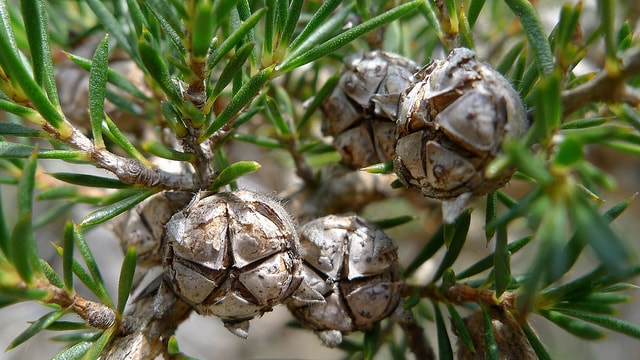9 Surprising Uses for Tea Tree Oil
“Tea tree oil” is something that we’ve either heard of or read about pretty frequently in recent times, mostly associated with wonder cures and other positive things. It has also inspired a number of articles that provide beneficial guidance for a wide array of things.
Just what is it exactly, though?
Also known as melaleuca oil, tea tree oil is derived from the leaves of the Melaleuca alternifolia, a plant that is native to Australia. This plant should not be confused with the regular tea plant, from which we make infusions and variants of the drink.

Defined by the International Standard ISO 4730, tea tree oil has to have 15 components in order to be classified as such. It is available in six different combinations, and has a fresh, camphor-like smell.
Reportedly, the first commercial use of tea tree oil for its host of benefits started in the 1920s, in Australia. Since then, it has only gone on to expand into other countries, and today, enjoys widespread appreciation globally.
Why does it merit your attention? Here are 9 of its more important uses.
Acne Treatment and Prevention
Using a product that is purely oil may seem counterproductive to treating a condition that involves extreme oil production, but it is not. According to a study conducted by the University of Maryland Medical Center, tea tree oil has been found to be quite as effective as using benzoyl peroxide at treating acne – with the added benefit that it does not produce as many side effects.
If you’re interested in seeing this for yourself, there are a couple of topical products that contain tea tree oil, such as gels and creams. You can also opt to use tea tree oil itself to make a DIY acne wash! Mix five drops of the oil with two teaspoons of raw honey; to use, wash your face with the mixture, leave it on for about a minute, and then rinse with cold water.
Athlete’s Foot Treatment
Early studies have asserted that the oil can also be used to treat tinea pedis, which is more commonly known as Athlete’s foot. In one trial, 158 subjects suffering from the condition were asked to use 25% tea tree oil solution, 50% tea tree oil solutions, and placebo. They found that, after twice-daily applications for a month, the tea tree oil solutions were more effective than placebo. Another study also found that tea tree oil was as effective as a certain over-the-counter medication for the treatment of the condition.
If you want to try it, add a few drops of the oil to witch hazel and, with a cotton swab, apply the solution to the affected area thrice a day. But make sure that you procure a physician’s recommendation before doing so, because tea tree oil may promote a host of side effects – including rashes, redness, and itching.
Psoriasis Relief
The oil is also considered to be effective at relieving itches and softening plaques from psoriasis. One common way people use it is to rub the oil onto affected areas several times a day. It is also added to shampoos to help with scalp psoriasis. However, it is important to note that if you intend to use tea tree oil as a topical treatment that is applied directly to the skin, it must be diluted with a carrier oil such as olive oil or almond oil to prevent harsh side effects.
Yeast Infection Treatment
One study discovered that terpinen-4-ol, an ingredient in tea tree oil, to be effective at relieving yeast infections. There are several ways to harness this use. First, you can mix tea tree oil with lavender oil, and allow the solution to dissolve in vinegar; after, pour the whole mixture into warm water, and then put the solution into a douche bag; shake the contents and douche accordingly.
You may also combine 4 or 5 teaspoons of tea tree oil with vegetable oil, and pour the mixture into your bath water. Additionally, there are creams and suppositories that contain the oil, for the treatment of yeast infections.
Nail Fungus Treatment
According to a study published on Drugs.com, tea tree oil is as effective as a popular nail fungus medication in treating the condition. But it is important to use the oil properly, in order to effect positive results. Before applying it to your nails, for instance, it is imperative that the nails be properly cleaned from dead nails and other components.
Once ready, put a moderate amount of tea tree oil onto a cotton swab and apply on each nail, once in the morning, and once at night. Repeat the procedure once or twice a week.
Head Lice Treatment
Tea tree oil contains two specific ingredients that are considered to have insecticidal effects. In one study, a one-percent tea tree oil solution was found to be effective at killing 100 percent of head lice, in 30 minutes. Other studies also suggest that the oil can kill lice in their nymph and adult stages, as well as limit the number of eggs that the lice can hatch.
Contact Dermatitis Treatment
Additionally, tea tree oil is believed to be particularly helpful in suppressing contact dermatitis, a form of eczema. One particular study compared several treatments such as tea tree oil, zinc oxide, and clobetasone butyrate for the condition and discovered that tea tree oil was the most effective.
It is important to note, though, that using tea tree oil for contact dermatitis should not be attempted without the guidance of a medical professional. The oil may also promote contact dermatitis in some people, as a side effect.
Scalp and Hair Issues Treatment
If you hope to keep your locks healthy and vibrant, you can use tea tree oil in a myriad of ways. First, you can apply a few drops to your shampoo for daily cleansing. You can also mix it with a carrier oil to be massaged onto the scalp to unclog hair follicles for healthy growth or ease dry scalp. Tea tree oil is also considered to be effective against dandruff.
Cosmetic Applications
Finally, tea tree oil can supplement cosmetic practices. If you want to remove your makeup, for instance, keep it organic and natural by mixing a few drops of tea tree oil with canola oil. To use, just swipe some of the mixture onto a cotton swab, wipe your face with it, and rinse with warm water. This solution is believed to be particularly helpful for removing heavy mascara.
In addition, you can mix tea tree oil with other essential oils to soften your nail cuticles. To do so, mix avocado and jojoba oils in a dark bottle, mix in lavender and tea tree oils, and shake. Apply onto cuticles to prevent splitting and cracking.
Sources:
- http://www.rd.com/health/wellness/tea-tree-oil-uses/
- http://www.naturallivingideas.com/tea-tree-oil-uses/
- http://www.livestrong.com/article/94136-use-tea-tree-oil-acne/
- http://www.webmd.com/vitamins-supplements/ingredientmono-113-tea%20tree%20oil.aspx?activeingredientid=113
- http://www.webmd.com/skin-problems-and-treatments/psoriasis/psoriasis-alternative-treatments#1
- http://www.livestrong.com/article/361191-how-to-use-tea-tree-oil-for-yeast-infections/
- http://www.livestrong.com/article/284398-how-to-use-tea-tree-oil-to-treat-fungal-nail-infection/
- http://www.healthline.com/health-slideshow/tea-tree-oil-treatment-lice#9
- http://www.medscape.com/viewarticle/857444
- http://www.medicalnewstoday.com/articles/262944.php
Image Sources:
- 1. https://flic.kr/p/b4tnsT
- 2. https://pixabay.com/en/acne-
pores-skin-pimple-female- 1606765/ - 3. https://pixabay.com/en/sole-
of-the-foot-cornea-foot- bubble-609676/ - 4. https://pixabay.com/en/rash-
red-inflamed-reddish-356432/ - 5. https://flic.kr/p/dQDM7c
- 6. https://flic.kr/p/89vRyJ
- 7. https://flic.kr/p/oma9qH


View Comments (2)
Tea Tree Oil is my go-to for acne treatment. It really helps calm the breakouts.
I have super oily skin, so i love Tea Tree oil and products with tea tree oil alot. I dint knew it can be used for so many other issues also.